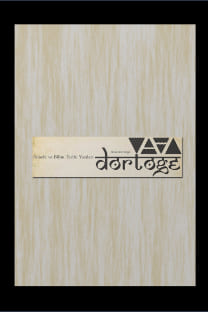Teknoloji ve Toplumsal Değişim İlişkisinin Sosyal İnşa Kuramı Bağlamında İncelenmesi
Toplum, Sosyal İnşa, Teknoloji, Teknolojinin Sosyal İnşası
A Research in the Context of the Social Constructivism of Technologyand social change
___
- Basalla, G., (2013). Teknolojinin Evrimi, C. Soydemir (Çev.), Ankara: Doğu-Batı.
- Berger, P. L., Luckmann, T., (1966). The Social Construction of Reality-A Treatise in the Soci- ology of Knowledge, NewYork: Penguin Books.
- Bijker, W. E., Pinch, T. F., (1993). “The Social Construction of Facts and Artifacts: Or How the Sociology of Science and the Sociology of Technology Might Benefit Each Ot- her”, Social Construction of Technological Systems (2. Baskı), ed. Bijker, W. E., Hughes, T., Pinch, T., Cambridge: MIT Press, pp.17-50.
- Bijker, W. E., (1995). Of Bicycles, Bakelites, and Bulbs: Toward a Theory of Sociotechnical Chan- ge, Cambridge, MA: MIT Press.
- Bijker, W. E., (2001). “Understanding Technological Culture through a Constructivist View of Science, Technology, and Society”, Visions of STS: Counterpoints in Science, Techno- logy, and Society Studies, ed. Cutliffe, S. H., ve Mitcham, C., Albany, NY: SUNY Press.
- Bijker, W. E., (2010). “How is Technology Made-That is the Question?”, Cambridge Journal of Economics, V. 34, pp. 63-76. doi:10.1093/cje/bep068
- Bloor, D., (1991). Knowledge and Social Imaginary (2. Baskı), Chicago: University of Chi- cago Press.
- Çelebi, N., (2007). Sosyoloji Notları, Ankara: Anı.
- Erdil, E., Akçomak, S., Pamukçu, M.T., Tiryaki, M., (Ed.) (2016). Bilim Teknoloji ve Yenilik- Kavramlar, Kuramlar ve Politika, İstanbul: İstanbul Bilgi Üniversitesi.
- Giddens, A., (1999). Toplumun Kuruluşu, Hüseyin Özel (Çev.), Ankara: Bilim ve Sanat.
- Gimpel, J., (2005), Ortaçağda Endüstri Devrimi (8. Baskı), N. Özüaydın (Çev.), Ankara: Tübitak Popüler Bilim Kitapları.
- Klein, H. K., Kleinman, D. L., (2002). “The Social Construction of Technology: Structural Considerations”, Science, Technology&Human Values, V. 27, No. 1, pp. 28-52. http:// www.jstor.org/stable/690274
- Latour, B., (1992). “Where are the Missing Masses? The Sociology of a few Mundane Artifacts”, Shaping Technology/Building Society, ed. W. E. Bijker ve J. Law, MA: MIT Press, pp. 225-58.
- Merton, R. K., (1968). Social Theory and Social Structure, New York: The Free Press.
- Mesthene, E. G., (1971). Technological Change-Its Impact on Man and Society, Massachu- setts: Harvard University Press.
- Russell, S., (1986). The Social Consideration of Artefacts: A Response to Pinch and Bijker, Social Studies of Science, V. 16, No. 2, pp. 331-346
- http://www.jstor.org/stable/285210
- Sismondo, S., (1993). “Some Social Constructions”, Social Studies of Science, Sage Publicati- on, Vol. 23, No: 3, pp. 515-553, http://www.jstor.org/stable/370258
- Sismondo, S., (2016). Bilim ve Teknoloji Araştırmaları Yaklaşımı: Temeller, S. Sağyan, Ü. Tat- lıcan (Çev.) Ankara: Epos.
- Volti, R., (2014). Society and Technological Change, New York: Worth Publishers.
- Wallace, R. A., Wolf, A., (2002). Çağdaş Sosyoloji Kuramları, L. Elrubuz, M. R. Ayas (Çev.), İzmir: Dokuz Eylül Üniversitesi Yayınları.
- ISSN: 2146-7064
- Yayın Aralığı: Yılda 2 Sayı
- Başlangıç: 2012
- Yayıncı: Nobel Akademik Yayıncılık
Konya Örneği Bağlamında Tinsel Üretim ile Mekânın Karşılıklı Yapılandırıcı Etkilerinin İncelenmesi
Cinayet mi İntihar mı? Conatus Vakası
David Lewis’in Karşıt-Olgusal Bağlılık Kavramında Zamansal Asimetri Meselesi
İbrahim Müteferrika Öncesi İstanbul’da Yahudi Matbuatı
İbrahim Müteferrika ÖNCESİ, Selin KARA
Fizyonominin Edebiyata Yansımaları
Teknoloji ve Toplumsal Değişim İlişkisinin Sosyal İnşa Kuramı Bağlamında İncelenmesi
Burak Can SERDAR, Tarık Tuna GÖZÜTOK, Şafak URAL, Yerel Süreli YAYIN, Nevzat ARGUN, Yazı İşleri MÜDÜRÜ, Hilal Süslü ARGUN, Ercan SALĞAR, Deniz KUNDAKÇI, Posta Çeki HESABI, İnan KALAYCIOĞULLARI, F Jamil RAGEP, Kenan GÜRSOY, İlber ORTAYLI, Melek Dosay GÖKDOĞAN, Feza GÜNERGUN, Sabri BÜYÜKDÜVENCİ, Hüseyin Gazi TOPDEMİR,
Törensellik ve Toplumsal Yaşamın Koreografisi: Malinowski’nin Etnografik Yas Anlatısı
İbrahim Müteferrika Öncesi İstanbul’da Yahudi Matbuatı
İbrahim Müteferrika ÖNCESİ, Selin KARA
